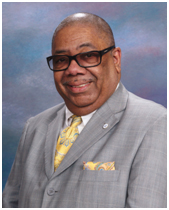
By Rev. Donald L. Perryman, Ph.D.
The Truth Contributor
Fresh ideas come from those who do more than think outside the box. They think outside the building. – Rosabeth Moss Kanter
It only took barely a year for Toledo native JoJuan Armour to decide that he had had enough. Homicide rates overall dropped significantly, and his efforts reduced violent crime in the targeted Junction neighborhood. In addition, Armour prevented retaliation in two incidents where individuals were shot and blocked a revenge shooting after another homicide. The numbers and opportunities to mediate conflict indicated the Mayor’s Initiative to Reduce Gun Violence that Armour led was working and effective.
Yet, last week Armour emailed his resignation to Mayor Wade Kapszukiewicz, Safety Director Brian Byrd and Deputy Director Angel Tucker. Armor stated that the reason for leaving was the superficial “to spend more time with family back in Columbus.”
The truth is that Armour has a beautiful home in Columbus, where he has two lovely young daughters and a college-age son. He adores his children indescribably and, thus, never made a complete transition back to Toledo.
Yet, Armour’s attempts to do his job have been under siege from the very start. The day he was hired, the Toledo Police Patrolman’s Association sent an angry letter to the mayor calling his hire a “direct slap in the face.” Not to mention, JoJuan’s high-profile hiring has also been under attack from outside groups and the subject of online ridicule with trolls on social media from day one.
Unsurprisingly, stereotypical inside rumors were floated to rationalize Armour’s leaving. He was not a good fit, had personality differences with employees or had trouble taking orders or operating in a hierarchical setting … blah blah blah. The typical imputations that accompany most African-American male staff leaders in white organizational settings.
Yet, why are African-American male leaders leaving the City of Toledo after such a short tenure, such as Armour and former Diversity, Equity and Inclusion head Matt Boaz, before him?
The nature of institutions like the City of Toledo is “There’s always someone inside that doesn’t want you to get the job in the first place. And so, they make it more and more difficult to perform the job. They hope you’ll get frustrated at the barriers because you could’ve made more progress, or it’s like death by a thousand papercuts. Even if you make progress, you get tired of fighting all the time or getting beat down before they finally let you have something. That’s often always the case,” said an anonymous human resource professional.
Additionally, institutions often merely offer lip service to change but prefer the established order or status quo. Yet, real change, to use a term coined by biblical scholar Wilda Gafney, “snatches the wigs off” or exposes what institutions want to “keep hidden under the cosmetic veneer of respectability.” So, Armour’s work, although fruitful, may have begun to expose some of the City’s bureaucratic infrastructure, revealing its incompetence, hidden power centers and exploitative self-interests.
To Armour’s credit, he refused to say one negative word publicly or describe what goes on in the “locker room,” so to speak. Yet, we know that natural but formidable barriers make a job like gun violence czar difficult in an institutional setting.
Where do we go from here to address the problem of gun violence in Toledo?
Leadership scholar Rosabeth Moss Kanter likens institutions such as the City of Toledo to a modern physical form of castles. These structures represent museums to the established order or dominant way of dealing with issues. Contemporary castles, like their medieval counterparts, Kanter says, “are monuments to the past and past thinking, museums of preservation. They are establishments harboring the establishment and designed to protect functionaries from unwelcome intrusions or the need to change.”
As soon as Armour’s methods generated positive results, the City of Toledo fortified the castle, dropped its gates, and raised drawbridges. Staff hunkered down defiantly, not wanting to be displaced so that new ways of doing things might make their methods obsolete.
Wisely, Armour possessed relationships and partnerships that were developed before he took the job. He wants to make sure that those partnerships remain successful. Therefore, he will no longer be involved with Cure Violence but will continue working in Toledo on several projects without pay and not for the City of Toledo.
As Kanter says, the best way to attack a “castle” is not head-on. Instead, go around it, underneath, or stay outside. Rather than fighting over creative differences in method or ideas, “Try dancing to new music. Create small villages with new activities sufficiently enticing that some castle occupants will wander out and join the festivities, emptying the castle of defenders,” Kanter advises.
Given Toledo’s strong defense against change, Armour is blessed to understand that fresh ideas come from those who do more than think outside the box. They think outside the building.
Contact Rev. Donald Perryman, PhD, at drdlperryman@enterofhopebaptist.org
